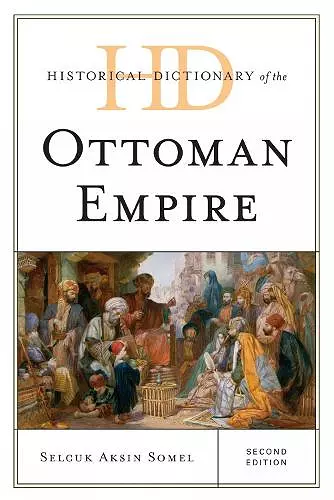Historical Dictionary of the Ottoman Empire
Format:Hardback
Publisher:Scarecrow Press
Published:29th Dec '11
Currently unavailable, and unfortunately no date known when it will be back

The Ottoman Empire, like its eventual rival the Habsburg Empire, was a dynastic kingdom whose rule encompassed most of the Middle East, most of North Africa, and parts of Europe at its peak in the mid-17th century. Osman I founded the Ottoman Empire in the early 14th century, and subsequent rulers, or Sultans, rapidly expanded the boundaries of the territory. In the 15th and 16th centuries the Ottomans conquered Constantinople, putting an end to the powerful Byzantine Empire and expanded north into Europe, becoming a major player in European politics. At the beginning of the 20th century, the power of the Ottoman Empire had been declining for several hundred years, and the Empire officially dissolved at the end of the First World War.
In this revised and updated second edition of the Historical Dictionary of the Ottoman Empire, author Selcuk Aksin Somel introduces both the general reader and the researcher to the history of this dynasty. The comprehensive dictionary includes detailed, alphabetical entries on key figures, ideas, places, and themes related to Ottoman history and culture. An expanded introduction provides a basic overview to the history of the Empire, and a guide to further sources and suggested readings can be found in the extensive bibliography that follows the entries. A basic chronology and various maps and illustrations are also included in the dictionary. This book is an excellent access point for students, researchers, and anyone wanting to know more about the Ottoman Empire.
In this updated and expanded edition of his 2003 work, Somel (Ottoman history, Bilkent Univ., Turkey) charts the rise and decline of the Ottoman Empire. He opens with a chronology of events from 1040 to 1924 and a 30-plus-page introduction highlighting major happenings. The alphabetically arranged entries that follow cover historical, political, and cultural events and people in a readable manner. Finally, Somel offers a bibliography divided into subject areas such as “Foreign Relations and War,” “Ottoman Classical Period,” ”Religion,” and “Cultural Life,” recognizing many sources published since the release of the first edition. These include Stephen Turnbull’s The Ottoman Empire 1326–1699 (Routledge, 2003), which Somel recommends as a useful tool for English-speaking high school students, and Jason Goodwin’s Lords of the Horizons: A History of theOttoman Empire (Holt, 1999), which he suggests as “an easy start.” The exhaustive bibliography includes a listing of sources in French, German, and Turkish, so scholars and readers at all levels and backgrounds should find something of interest. VERDICT While the entries are brief, this volume provides adequate explanation and coverage of each subtopic. Libraries that serve advanced high school students as well as larger public and academic collections should consider it. * Library Journal *
Somel’s volume provides a remarkable resource for a period of history and a portion of the world lightly addressed in nonspecialized courses and books in history....Ultimately the volume clearly has value for university, college, and major public libraries as well as those of secondary schools with relevant populations, along with those scholars and general readers whose interests lie in the geographic areas and time periods covered. * American Reference Books Annual *
ISBN: 9780810871687
Dimensions: 239mm x 164mm x 45mm
Weight: 980g
576 pages
2nd edition